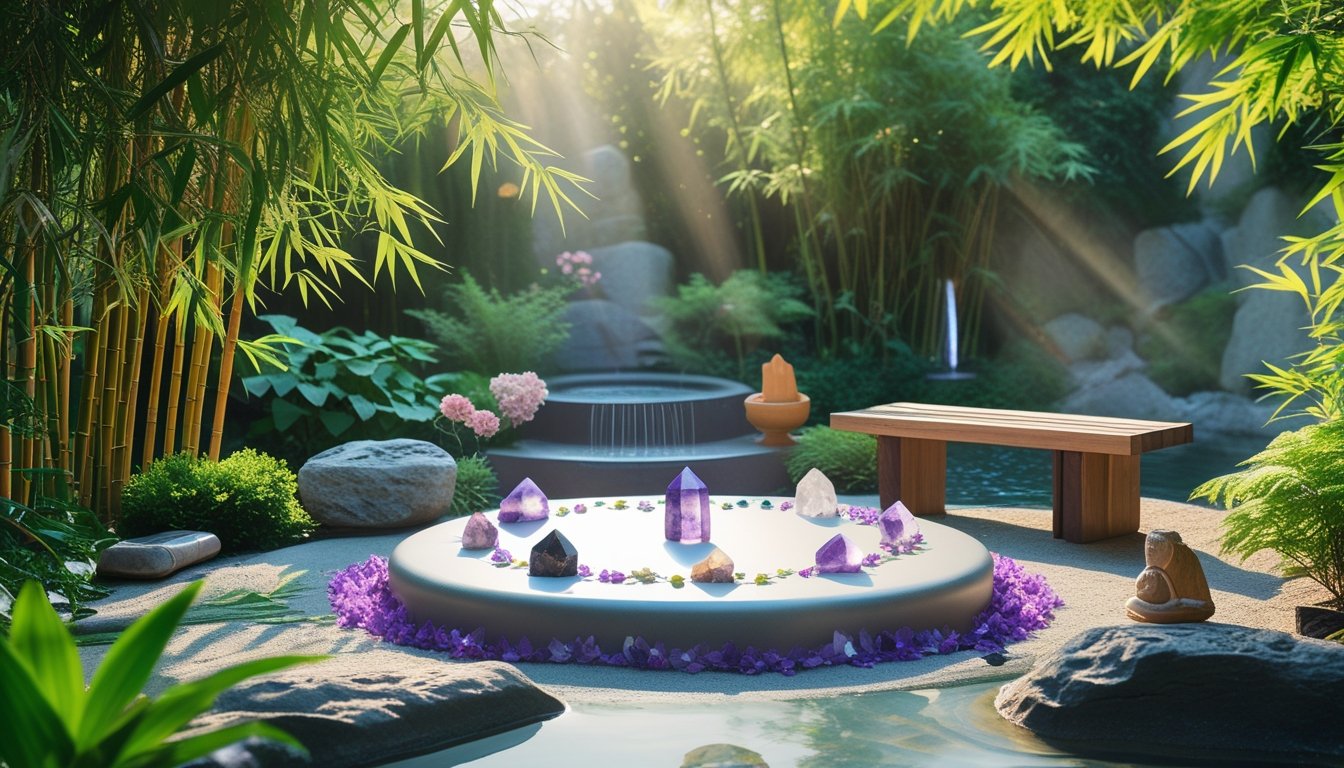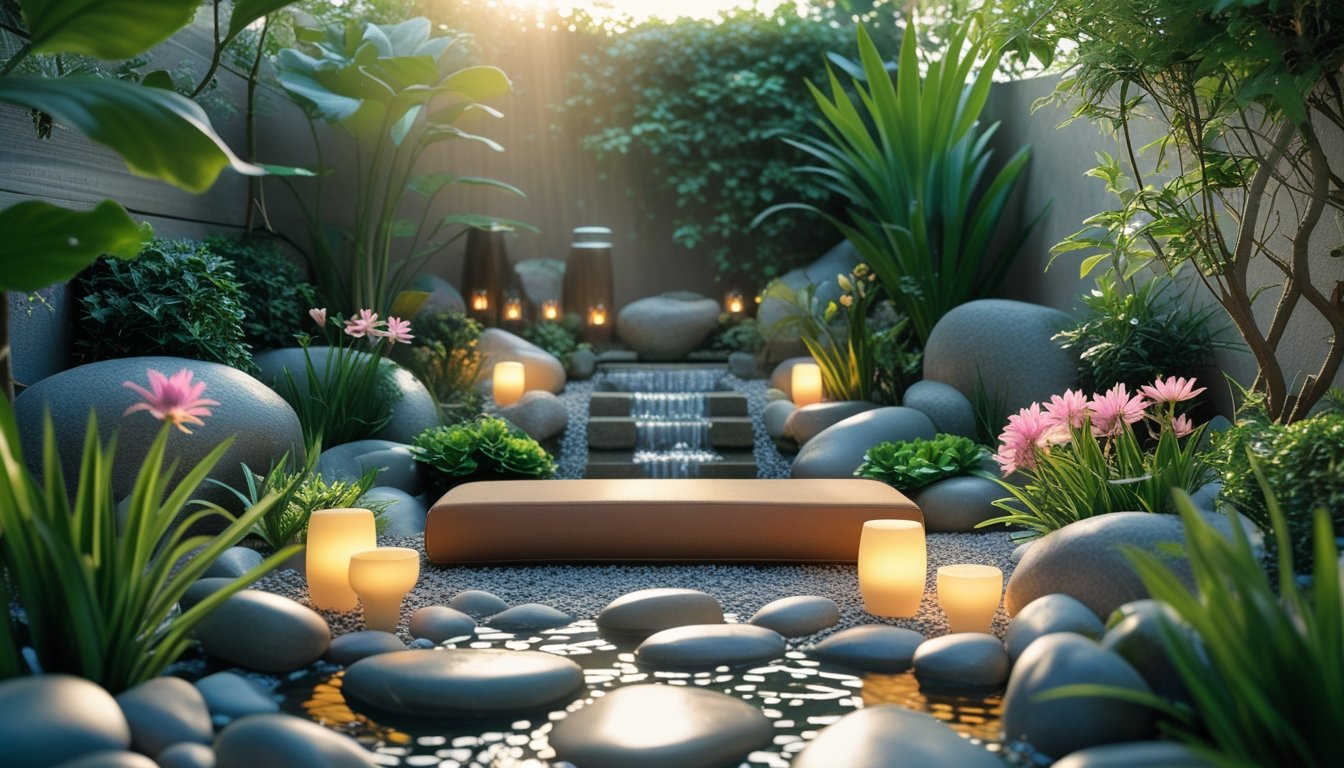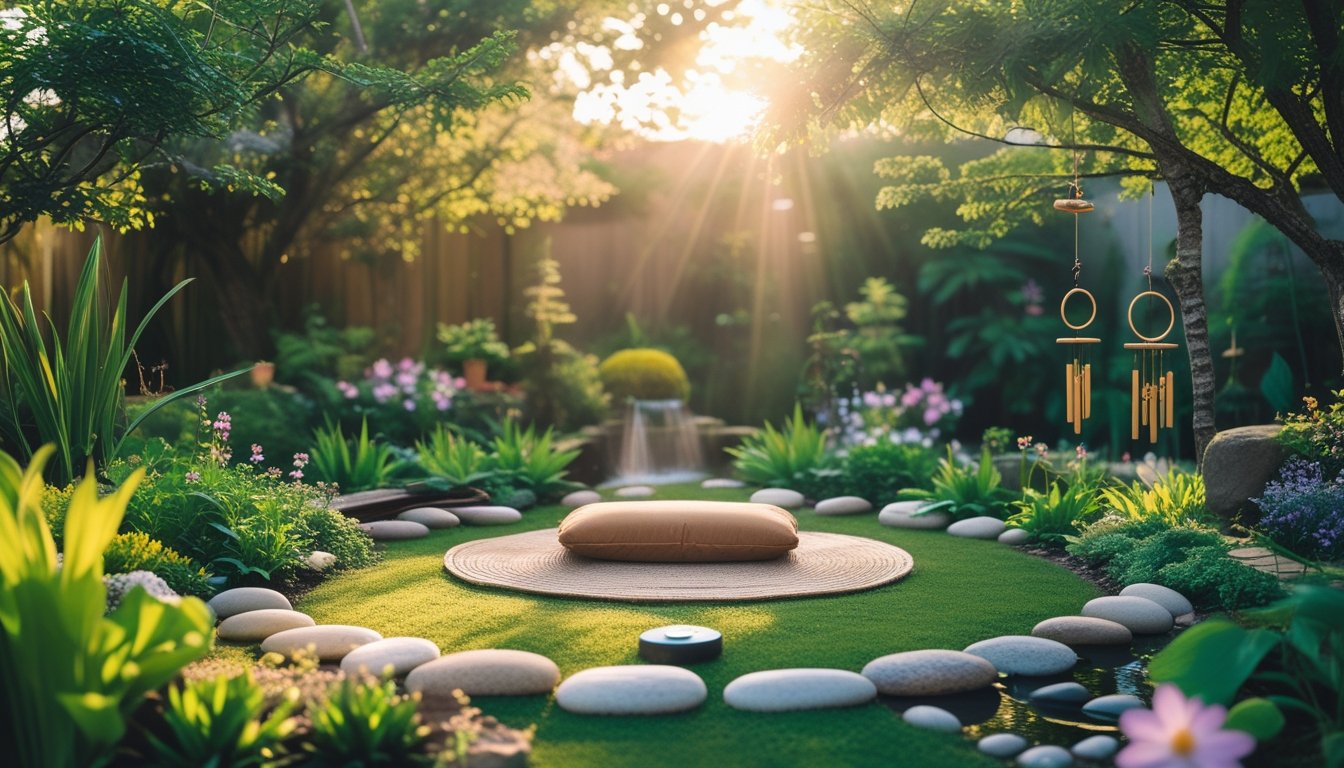Late updated: 29 Jul 2025 15:07
Written by: James Whitaker
Creating A Reiki-Inspired Garden Meditation Space: Enhancing Tranquillity and Wellbeing
Crafting a Reiki-inspired garden meditation space offers a serene setting for mindfulness and energy healing practices. Integrating elements that embody peace, such as flowing water features, gentle pathways, and lush greenery, can enhance the meditative experience. By harmonising the natural energy of the garden with Reiki principles, we create a sanctuary for healing and reflection.

Reiki focuses on the flow of life force energy, and incorporating this into a garden space allows for a seamless blend of nature and spiritual practice. Selecting plants and materials that support relaxation encourages a holistic atmosphere conducive to meditation. Seating areas, whether a simple bench or a Zen stone arrangement, act as focal points where one can channel energy and introspect.
Recognising the interplay of nature's five elements—earth, wind, water, fire, and metal—we transform our garden into a reflective retreat. The careful balance of these elements aligns with Reiki's emphasis on energy flow, making the garden not only a place of beauty but also a space for introspection and rejuvenation.
Key Takeaways
- Reiki gardens balance nature and spiritual practice.
- Key elements enhance relaxation and meditation.
- Harmonising garden design supports healing and reflection.
Core Elements Of A Reiki-Inspired Garden Meditation Space

Creating a Reiki-inspired garden meditation space involves careful consideration of energy flow, natural elements, and spiritual symbols. The following aspects are key to designing a garden that enhances relaxation, healing, and mindfulness.
Principles Of Reiki In Garden Design
In designing a Reiki-inspired garden, we focus on integrating the principles of energy harmonisation and healing. Gardens should be arranged to allow Qi, or life force energy, to flow freely, facilitating an environment of balance and tranquillity.
We incorporate symmetry and simplicity, as these elements reflect harmony, which supports the garden’s purpose of healing and meditation. Pathways should meander gently, guiding footsteps while promoting a sense of exploration and connection with nature.
Selecting The Ideal Location For Energy Flow
Choosing the right location for our Reiki garden is vital to its spiritual efficacy. A secluded, quiet area away from bustling distractions is most favourable. This ensures an uninterrupted energy flow that aligns with the natural surroundings.
Orientation can also affect energy dynamics. South-facing gardens often capture gentle sunlight, providing warmth and illumination without being overwhelming. Creating shade with trees or structures maintains a soothing atmosphere.
Choosing Plants And Natural Features For Healing
In our Reiki garden, plants are selected not only for beauty but for their healing properties and ability to enhance energy. Lavender, chamomile, and rosemary are known for their calming effects, adding restorative qualities to the space.
Water features, like small fountains or ponds, introduce the element of flow, symbolising cleanness and constant energy movement. Stones and wooden structures provide stability and grounding, essential for a nurturing and balanced environment.
Integrating Reiki Symbols And Sacred Objects
Reiki symbols and sacred objects play a crucial role in embedding spiritual essence into our garden. We incorporate symbols like the Cho Ku Rei, Sei He Ki, and Hon Sha Ze Sho Nen, often placed discreetly using stones or carvings.
Sacred objects such as crystals or statues can be positioned strategically to enhance spirituality and focus. These elements serve as points of meditation, encouraging deeper connection to our practice and the energies that flow within our garden space.
Creating A Holistic Atmosphere For Reiki Meditation

Creating a Reiki meditation space requires attention to elements that foster tranquillity and spiritual connection. We can transform a simple garden area into a sanctuary by focusing on sound, seating, lighting, and intention.
Incorporating Water Features And Soundscapes
Water features such as a small pond or fountain can greatly enhance the meditative atmosphere. The gentle sound of flowing water acts as an auditory anchor, promoting relaxation and mental clarity. Wind chimes or soft instrumental music can further enrich the soundscape, inviting a deeper meditative state. Selecting materials that blend with the natural environment ensures harmony within the garden, essential for maintaining the balance of energy important in Reiki practice.
Setting Up Comfortable Seating And Meditation Zones
Seating should be both functional and spiritually aligned. Consider placing bamboo or wooden benches strategically around the garden, offering a mix of sun and shade. Incorporate textures and fabrics that are soothing and comfortably support varied meditation poses. Floor cushions or mats can be placed at focal points, serving as direct invitations to reflect and meditate. Selecting eco-friendly and weather-resistant materials will help ensure that the elements remain durable and harmonious with the holistic environment.
Using Light, Colour, And Aromatherapy
Lighting plays a pivotal role in creating a serene atmosphere. Lanterns or solar-powered lights provide subtle illumination and maintain an inviting ambience during evening meditations. Incorporating colours that resonate with Reiki principles—such as soft blues, greens, and purples—can create visual harmony. Introducing aromatherapy with naturally sourced essential oils, like lavender or sandalwood, can enhance the sensory experience, aligning the physical space with holistic healing energies. Diffusers can softly disperse these scents, reinforcing the calming environment.
Maintaining A Sacred And Intentional Environment
A Reiki garden must be imbued with purpose and sacredness. Regularly practising rituals, such as smudging with sage or aligning crystals at specific energy points, can sustain this sacred atmosphere. Incorporating symbols that represent serenity and healing personalises the space and deepens our connection. We commit to maintaining its sanctity by regularly cleansing the area and refreshing botanical elements, ensuring a thriving and spiritually aligned environment.
Frequently Asked Questions

Creating a Reiki-inspired garden meditation space involves thoughtful design, careful selection of elements, and strategic planning. These spaces provide peace and serenity, essential for meditation and relaxation.
What are the essential elements to include in a meditation garden?
Essential elements of a meditation garden comprise natural materials, soothing colours, and focal points like a central statue or feature. Privacy is vital, so consider using hedges or fencing. Pathways invite exploration and mindfulness, and harmonious elements integrate energy flow.
How can one design a small meditation garden within a limited outdoor space?
Utilising vertical space with climbing plants or hanging gardens can effectively maximise a small area. We can create a sense of openness with mirrors or strategically placed reflective surfaces. Selecting multifunctional pieces such as a bench that doubles as storage can help conserve space.
What plants are recommended for a serene and calming garden environment?
Lavender, chamomile, and jasmine emit calming scents. Evergreen plants provide year-round greenery, while bamboo adds a Zen quality. Consider plants with smooth leaves to avoid sharp edges. Aromatic herbs can also be practical yet fragrant additions.
In what ways can water features be incorporated into a meditation garden design?
Water features add soothing sound and visual appeal. A small fountain or birdbath can fit in the tightest spaces. We can add a pebble stream or an ornamental pond with stones or stepping paths for tactile and auditory meditation experiences.
What are some affordable solutions to create a tranquil garden meditation area?
We can use upcycled materials for pathways and seating, making a DIY approach both affordable and sustainable. Native plants reduce maintenance costs and thrive with natural weather conditions. Creativity in design ensures tranquillity without significant expense.
How should the seating be arranged to maximise the meditative experience of a garden?
Arrange seating to face focal points to encourage introspection. Seating should be comfortable and positioned away from distractions. Options like meditation cushions on the ground or benches with back support can cater to individual needs. Maintaining a clear view of the sky adds to the tranquillity.
